While waiting for “FASE 21: Ways of Being” on June the 7th, we invite you to meet the team of 12 judges who helped to shape this year’s program – 11 short moving-image works that explore the myriad ways of being in this day and age, by dwelling into topics ranging from artificial intelligence, isolation and doppelgängers to politics, love and loss. The selection, curated by and for young people, presents films made by both emerging and established Screen School students and alumni, and is dedicated to amplifying the voices of tomorrow today. Book your tickets here.
Rafael Aflalo’s Billy and Charley
[Geidė Sofija] This short animation about two forgery artists took me by surprise – a very pleasant one though. From the refreshingly original approach and perfectly aggressive sound effects to the fascinating story – this film is filled with endless charm. Billy and Charley is a true example of how creative simplicity can turn out to be simply extraordinary. [Martyna] Amen to that! I’ve also always wondered what would happen if one day all the originals in an art museum would be secretly replaced by their reproductions – Billy and Charley, however, didn’t wonder but made it happen. Their stop-motion chatter blurs the boundaries between real and fake, before becoming an assault on the snobbery of the art world itself. Best of all? It only takes them 82 seconds to get it done.
Written by Geidė Sofija Jusiūtė and Martyna Ratnik

Soham Kundu’s Stay Maybe? We Think We Made a Film
Stay Maybe? is an unconventional film that explores the reality and complexities of a struggling relationship. Even though the lines between fiction and reality are blurred, albeit this being a film about the making of a film, the theme on modern relationships that it portrays is still so relevant in an era where we’re now no longer aiming for perfection in relationships, and that we can tell ourselves that it is okay to fall out of love. All set in the heart of the bustling city of London, a camera crew follows a couple’s day in their life, revealing every relationship’s facade is just that – a facade! You probably pass a thousand couples on the bus, in the tube, or on an escalator, and not think twice about what they might be going through. But what this film does, is remind us that relationships have their own inner struggles and I think it was a very raw depiction of something that many people experience, but don’t necessarily talk about.
Written by Roberta Banks-Delvecchio
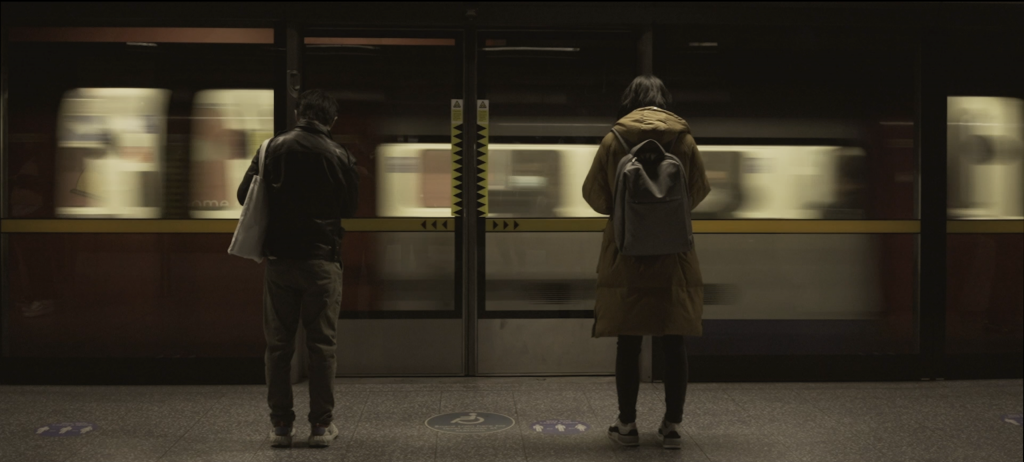
Karolina Gliniewicz’s I Showed Him Covid-19
I Showed Him COVID-19 is a short experimental film that creatively demonstrates how artificial intelligence can be used to produce a new-found genre of art. The piece, made up of over a thousand images taken since the onset of the pandemic, successfully showcases a digital, visual and original perspective of the coronavirus and its ambiguity. The merged and moving series of photographic images displayed onscreen throughout the film include a plethora of beautiful shapes, muted colours, uncanny formations, palpable textures and unearthly movements that seem almost distinguishable but certainly foreign to the naked eye. The soundtrack of the film perfectly lines up with its cuts and transitions and fittingly inspires an upbeat interpretation of its content upon the viewer. Looking deeper, all elements of this work confront the pandemic’s subsequent lockdowns, separations, losses, changes, emotions, and, most interestingly, the growing relationships and bonds between man and machine; humanity and smart technology in an innovative and sensational way.
Written by Mariella Driskell
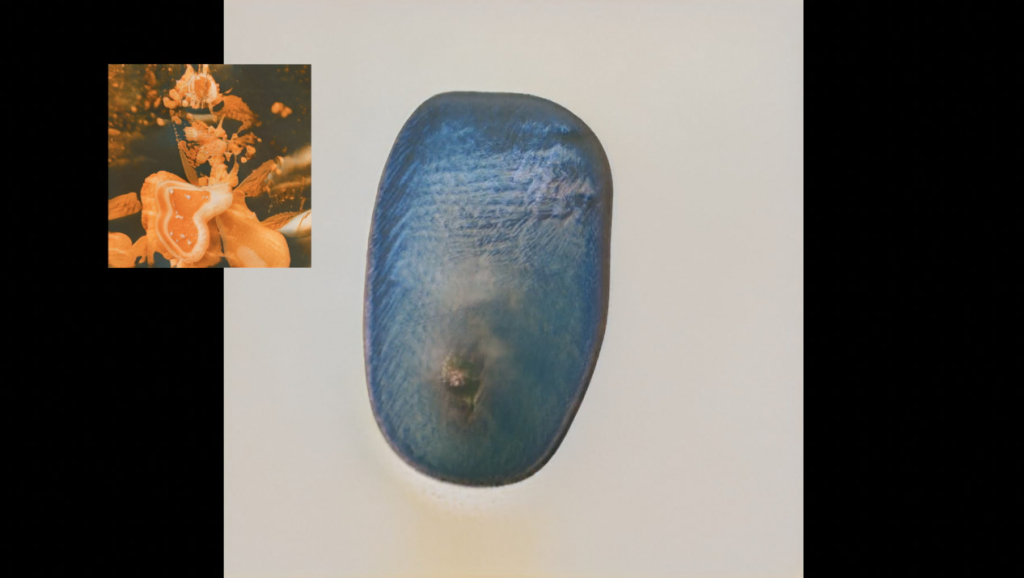
Raffaele Gabrielli’s The Red Pen
The Red Pen is a short animation that delves into existentialism and the various thoughts about existence we all have whilst intoxicated. I found the topics explored through the dialogue extremely relatable, capturing the essence of internal monologue effectively with sentences you and I have most likely spoken aloud or thought privately. This created a form of intimacy while watching like the filmmaker was somehow intruding yet representing past thoughts of mine with his words, sound design and simple but dreamlike animation style. This intimacy only drew me into the world more, captivating me both visually and psychologically especially due to the relaxing, almost sedative sensation created by the audible experience. The Red Pen lulled me into a state of abstract thought and encouraged my mind to wander into the depths of consciousness. This short film is a great exploration of conversation and consciousness which created an extremely personal and sensory viewing experience.
Written by Kim Hodgins
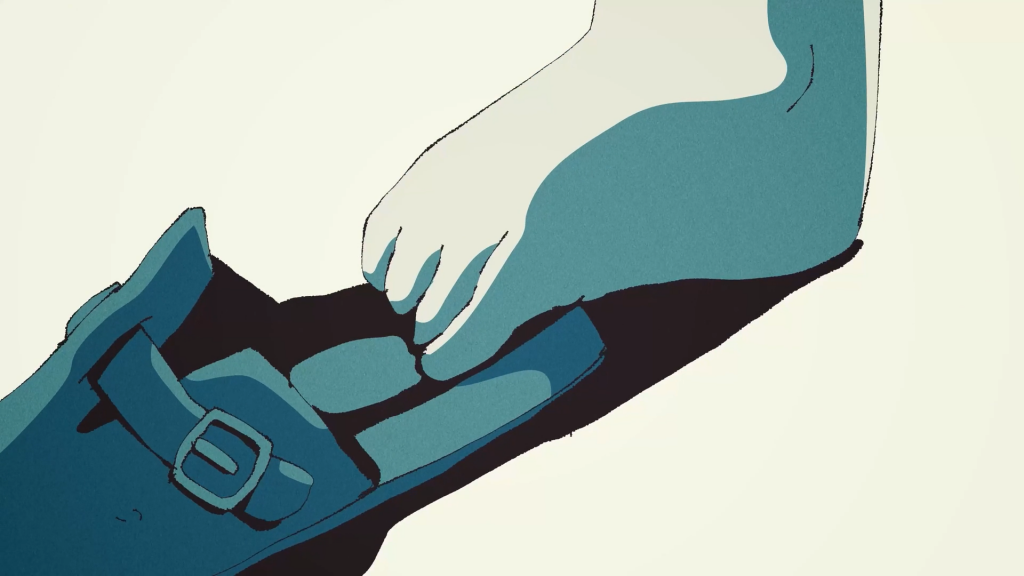
Parveen Ali’s A Home بيت
A Home sets its emotional tone in the beginning, with a ring to the police, followed by a prayer; a glimpse inside the struggle of Parveen and her surroundings. This short documentary film details the living situation of Parveen Ali as she struggles to find a home, with charming shots of her cat innocently unaware in the backdrop. The year 2020 hasn’t been easy for anyone with the rise of COVID-19, mentally and physically. For Parveen, the lockdown has brought on unsafety and unease, as she endures Islamophobic attacks and intimidation in her neighbourhood. She goes from phone call to phone call to find a home for her and her cat, depicting her faith in prayer, but also the loss of faith in finding safety in each rejected phone call. The film is a calm and subtle portrayal of a home, where she is safe on the inside but not on the outside. A moving documentary that places the viewer in the eyes and ears of Parveen as she searches for help from the three sources she knows best– her faith, the internet, and the police. Although heart-rendering, the calming music and Parveen’s soothing voice in the background portrays solidarity and strength in faith to keep calm and carry on regardless of her circumstance.
Written by Layal Algosaibi
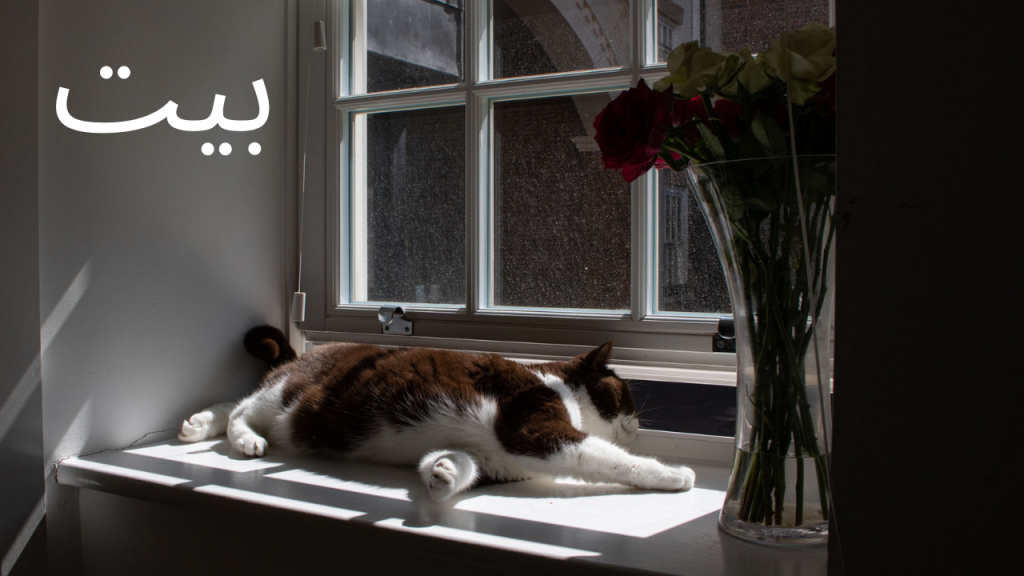
Georgia Bardi’s Matti’s Story
No spoiler warnings are needed for Matti’s Story, a short animated film made for the charity SCT. The film is based on an interview with Matti, a person with alcohol addiction; we listen to his thoughts, as he reflects on the person he was and the person he wants to be, and the help he’s received along the way. Matti’s true story itself is without any concrete detail of his addiction and it is through this lack of context, and through the wide empty spaces and relative anonymity of the line animation, that the film manages to speak for and to a wider group of people than just Matti. It’s in this way that the film successfully offers a subtle encouragement to those facing addiction, as Matti stresses the importance of the charity’s help in the journey away from addiction, as he himself journeys forward on a silent bus. There’s a complete absence of diegetic sound in this film, only ethereal music that suspends any surrounding reality and serenely immerses the viewer and Matti completely in his story. It’s a simple and elegant short film; it’s a story about redemption.
Written by Michelangelo De Cia
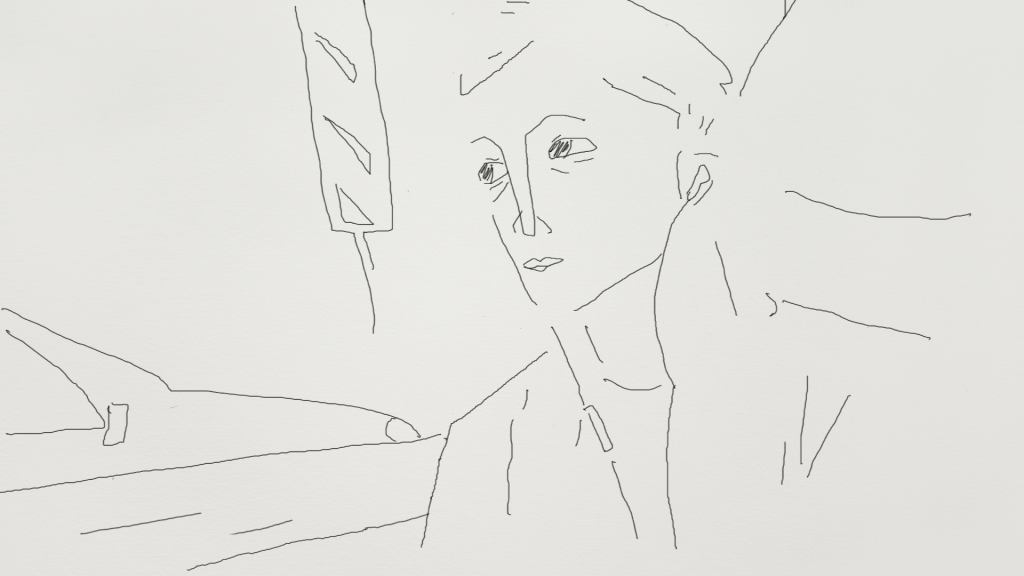
Kevin Ching’s Sardine
I found Sardine to be a beguilingly eccentric and stimulating film that has an arresting stillness that instantly enveloped me into the confining world it creates. Initially, I thought the motive of the film was to provide an interesting perspective on the concepts of egocentrism and narcissism, which would feel timely in the current zeitgeist. Although this exploration of self-obsession is incredibly relevant in today’s social media age, I think the film’s prevailing concern is that of pervasive isolation. I imagine that contemporary audiences will be exceedingly responsive to and interested in this examination of a desperate and perverse kind of loneliness. I believe that the uncensored and bizarre aspects of Sardine are meaningful as they convey the extremities of human desire and question what happens when a person retreats inside oneself, allowing the film to aptly slot into our film programme, Ways of Being.
Written by Erin Quigley

Yige Yang’s Blinded By Love
I enjoyed both its simplicity and its complexity, simplicity in terms of the art and animation where it is situated in mainly one space focusing on only three colours (black, white, orange), but complexity in the actions portrayed. I believe each audience member will have a slightly different interpretation of the different actions of both the protagonist and the “plant”. The background sounds both diegetic and non-diegetic paired well with the actions involved. I feel like everyone will have a personal connection with the story portrayed, often in relation to how we grew up ourselves around those who looked after us. The scene which left me with the biggest impact is when the protagonist kicks the plant away from drinking dirty water, which reminds me of my mother telling me not to put dirty food or unwashed fingers in my mouth.
Written by Wenqi Hu

Yanming Yang’s How to Become a Panda
How to Become a Panda is a dark humoristic animation with fascinating characters of keeper panda and curious man, exploring the themes of knowledge and influence. A panda and a man are stretching and bending the tiny surreal space where their fierce fight for the “The Panda’s Survival Kit” book’s forbidden secret happens. The characters’ relation was exciting to watch and is the most troubled duo you will see in the Ways of Being programme. Although its humoristic spirit, animation encouraged me to reflect on the never-ending struggles that had led to this unique characters’ dynamic. I enjoyed the minimalistic style with a well-thought colour choice and rhythmic pace, which made it impossible not to get into the characters’ game’s swing.
Written by Joanna Palmer
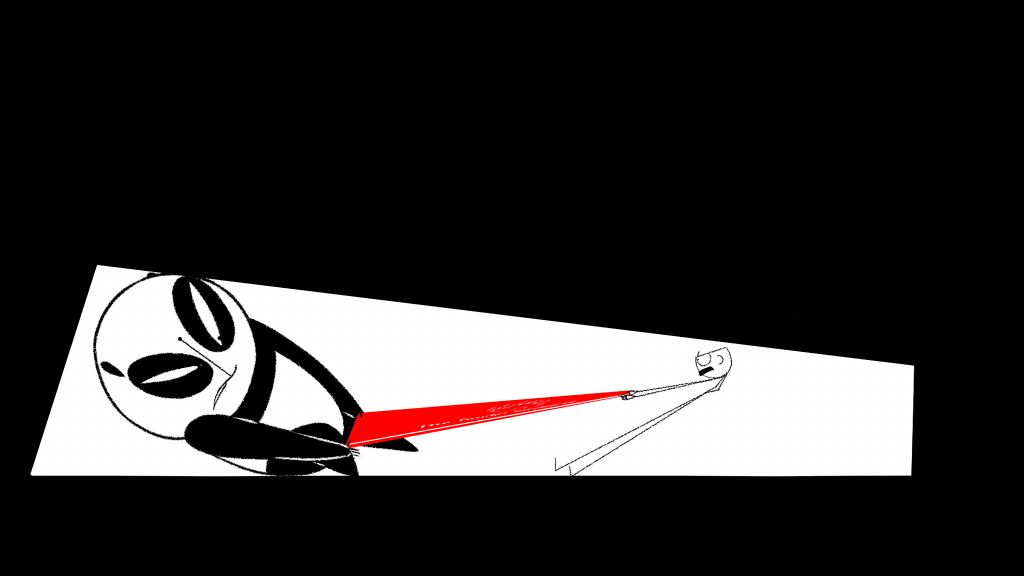
Laurie Barraclough’s Hey, Ma
What a feeling – to lose someone and never see them again. But at least the only thing that is left is hoping, hoping to see them again, hoping to hear their voice or see their smile at least one more time. While I was watching Laurie Barraclough’s Hey, Ma, it immediately reminded me of my own experience with loss, the loss of my most special person, my best friend, my grandfather. Even after a few years after losing him, I still hope that I will see him and give him a hug, hear his soothing voice and the only thing left is hoping. This is exactly what happens in Hey, Ma – because of her inner desire which has turned into an obsession to see her mother again, the girl follows a woman to her home until she realizes that this is not her. This story left me thinking about my own experience with loss and I could only express sympathy for what the girl is going through and left me thinking that every day someone loses a relative or a close friend and again the only way to deal with this is going through the painful experience with a glimmer of hope that we might see them again.
Written by Vanesa Mitova
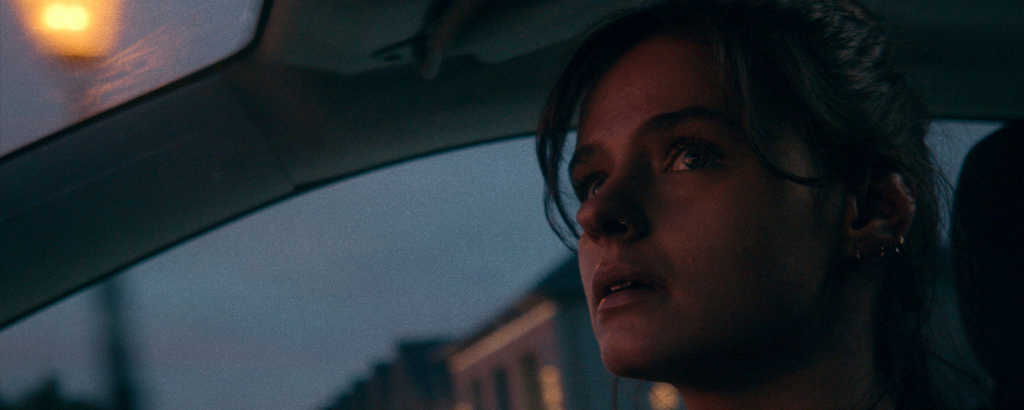
Natália Bednárová’s Angus the Humanoid Frog
Angus the Humanoid Frog is a short film that’s less than one minute. It is interesting, satirical, and makes you want to watch it again. This short film is not long, but it has an amazing plot setting with an incredible pace control. It is attractive and makes you think deeper about the hidden messages underneath. This comes from the execution of art direction, the placement of music and sound, and the creativity of the animator. What I like about this film is how it shows another perspective of us human beings. It is a perspective that we have never experienced, nor spent time thinking about. We are trapped in this busy world, just like how the frog is trapped in the aquarium display tank. This animation only has one fixed set design, which is the bedroom of Angus the humanoid frog. However, the director uses it to its maximum: drawing an astonishing amount of details to portray a lively animated world to us. It truly shows the hand-crafted spirit of animation, and that is the reason I selected this film. It tells a good story in under one minute and makes you want to watch it again.
Written by Chloe Zhao
